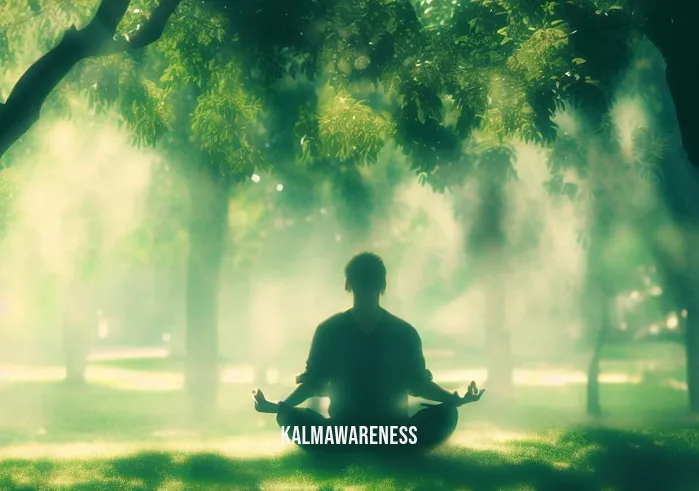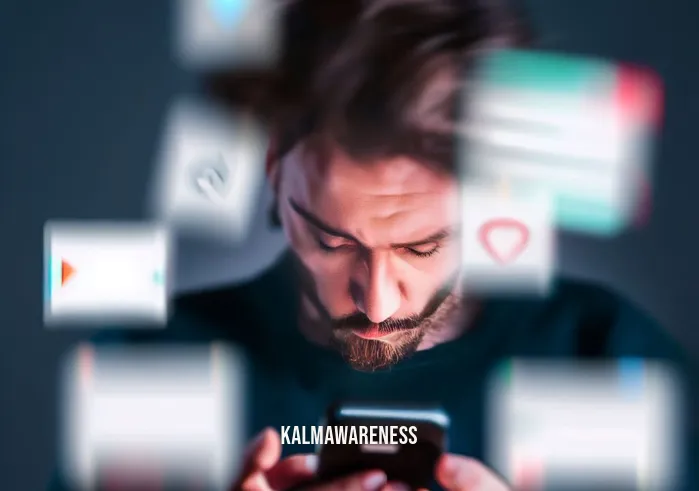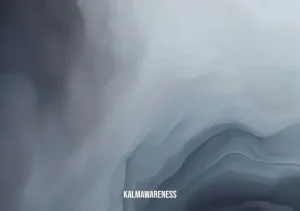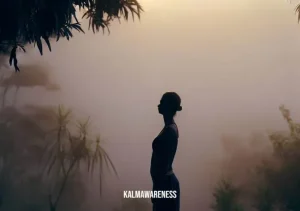Mindful vs Mindfull: Navigating the World of Meditation and Mental Well-being
In an increasingly chaotic world, more individuals are turning to mindfulness practices to find solace and regain control over their minds. Yet, the age-old debate on “mindful vs mindfull” is one that permeates every meditation discussion, creating a unique dilemma for enthusiasts and beginners alike. Understanding the difference and the impact of each is essential. Before diving into the specifics in the upcoming segments, let’s embark on a holistic exploration of the two concepts and why they matter in today’s age.
What Does It Mean to be “Mindful”?
Derived from ancient Buddhist practices, mindfulness has been reintroduced in the West through various channels, including the Penn Mindfulness Class. Mindfulness, at its core, is the art of being present. It is the act of focusing one’s attention on the current moment, observing it without judgment. Whether you’re immersing yourself in mindful martial arts or practicing techniques from Jack Kornfield’s Meditation for Beginners, being mindful is about engaging in the now.
A Miracle in Awareness
Thich Nhat Hanh, a renowned Zen master, once said, “Life is available only in the present moment.” This idea, elaborated in this dedicated article, emphasizes the importance of embracing the current moment. This act of mindfulness – of being deeply rooted in the now – is often termed a “mindful miracle.”
Mindfull: An Overflowing Mind
On the other hand, “mindfull” alludes to a mind that’s full of thoughts, ideas, worries, and anxieties. It represents the modern-day challenge that many of us face – a constant barrage of information and stimuli. Such a state can lead to stress, mental exhaustion, and decreased cognitive function.
Embracing practices like micromeditating or indulging in mindful books for teens can be the antidote to a “mindfull” state. Yet, it’s essential to understand that both states – mindful and mindfull – have their significance and place in our lives.
Incorporating Mindfulness Practices
With the basics outlined, the challenge arises in incorporating mindfulness practices effectively into one’s life. There are various avenues available, from Rouse Yoga to gratitude yoga in Princeton. For those interested in nature, mindful hiking can be an invigorating experience. However, some might need more personalized guidance, for which consulting a meditation consultant could be beneficial.
Mindfulness in Modern Living
Incorporating mindfulness isn’t just about formal meditation. It’s also about integrating practices into daily living. Whether it’s using the Mindful Harmony app or engaging in mindfulness for moms, modern solutions cater to various needs. And for those looking to keep their practices grounded and straightforward, resources like Keep it Simple Meditations or techniques of meditation made simple can be the key.
Conclusion and What Lies Ahead
The journey from understanding “mindful vs mindfull” is one filled with introspection, learning, and growth. As we traverse through the concepts, techniques, and practices that cultivate mindfulness, we’ll delve deeper into the nuances, debunking myths, and providing actionable insights. Whether you’re a seasoned practitioner or just beginning your journey, the subsequent segments will serve as an invaluable guide.
Eager to understand more about the tools, techniques, and transformations linked with mindfulness? Dive deeper with us as we explore more in the next chapter.

The Spectrum of Mindfulness: A Deeper Dive into Mindful vs Mindfull
The voyage into the realms of mindfulness and a cluttered mind is both enlightening and indispensable. When one recognizes the difference between being “mindful” and “mindfull,” a transformative journey begins. Yet, while the introductory notions provide a basic understanding, a richer exploration is warranted to truly grasp the essence and its implications on daily living.
Significance in Daily Living
Being mindful transcends mere awareness of the present. It encompasses a state of active attention, where each moment becomes a conscious experience. The ability to disconnect from the chaos of life and immerse oneself in the present can yield substantial benefits. On the contrary, a mindfull state, dominated by a barrage of endless thoughts, can have detrimental effects on our well-being.
Recent studies have shown that mindful skills can be instrumental in achieving a balanced life. Incorporating mindfulness into daily routines can offer clarity, improved cognitive abilities, and heightened emotional intelligence. Conversely, understanding and managing a ‘mindfull’ state can prevent the onset of stress-related disorders and cognitive declines.
The Science Behind the States
While the practice of mindfulness dates back centuries, modern science offers insights into its tangible benefits. Techniques like gratitude meditation before sleep or setting clear mindfulness intentions have proven neurological and psychological advantages.
To further illuminate the distinctions and implications of being mindful vs. mindfull, consider the following table:
| Aspect | Mindful | Mindfull |
|---|---|---|
| Mental State | Focused attention on the present | Cluttered with varied thoughts |
| Benefits | Stress reduction, improved cognitive function, emotional balance | Provides caution, preparation for potential challenges |
| Challenges | Can be tough to achieve initially | Mental fatigue, potential for anxiety |
| Tools for Cultivation | Meditation sessions, mindful activities, retreats | Cognitive Behavioral Therapy, grounding exercises |
| Noteworthy Approach | Embracing techniques from resources like mindfulness for moms | Utilizing applications like the mindful harmony app to declutter |
Mindfulness in Practice
- Engage in Nature: Embracing activities like mindful hiking allows individuals to connect with the environment, promoting a state of mindfulness.
- Reading and Reflection: Turning to mindfulness books for teens or any age group can provide techniques and reflections for improved practice.
- Daily Meditation: Whether it’s a simple breathing exercise or a dedicated mindfulness meditation session, consistency is key.
Overcoming a Mindfull State
- Acknowledge: Recognizing and accepting the mind’s clutter is the first step towards managing it.
- Prioritize: By determining which thoughts are essential, one can begin to declutter the mind.
- Seek Assistance: Consulting with a meditation consultant can provide tailored techniques to reduce mental chatter.
- Structured Activities: Engaging in structured physical activities, like yoga, can help channel focus and reduce mental clutter.
- Technology to the Rescue: Applications like the mindful harmony app offer guided sessions to navigate and manage a ‘mindfull’ state.
Charting the Road Ahead
With a more profound understanding of being mindful versus mindfull, one is better equipped to integrate and benefit from these concepts. The journey, however, is ongoing and evolves with practice, experiences, and new learnings. As we pave the way for a more in-depth exploration in the next chapter, the quest for mastery and understanding becomes all the more exhilarating.
The intricacies of mindfulness, its techniques, and the vast realm of its applications await. Join us as we unravel more mysteries, techniques, and the science behind mindfulness in the next chapter.

The Beacon of Mindfulness: Discovering Hope in the Dichotomy of Mindful vs Mindfull
In our journey through the realms of mindfulness, understanding the distinction between being “mindful” and “mindfull” isn’t merely an academic pursuit. It’s a passage filled with tales of transformation, hope, and inspiration. While the theoretical nuances equip us with knowledge, it’s the stories and quotes of lived experiences that ignite the flame of inspiration. Let’s delve into this heartwarming chapter, embracing the moments that shine light on the path of mindfulness.
Quotes that Illuminate the Path
“In the madness of a cluttered mind, the tranquility of mindfulness is the sanctuary of hope.” – Anonymous
This quote underscores the essence of being present amidst the chaos. Techniques like those taught in mindfulness for moms exemplify the journey from a turbulent mind to a peaceful one.
“When you are mindful, shadows of doubt are dispelled by the light of awareness.” – Lila Watson
For many who’ve treaded the path, this quote resonates deeply. Whether practicing gratitude meditation before sleep or embarking on a mindful hiking adventure, being in the moment dispels anxieties, making way for clarity.
“In a world spinning with thoughts, anchoring oneself in the present is the most courageous act.” – Mira Lee
Such an anchoring is not just an act of courage but also of hope. Using tools like the mindful harmony app, countless individuals have found their anchor amidst life’s whirlwinds.
Tales of Transformation
Elena’s Journey from Chaos to Clarity
Elena, a 34-year-old working mother, found herself constantly juggling tasks. The demands of her job, coupled with parenting duties, left her feeling overwhelmed. It wasn’t until she discovered the mindful skills workshop that her perspective shifted. Embracing mindfulness practices, she transitioned from a constantly “mindfull” state to a harmonious “mindful” existence. The chaos that once dominated her thoughts gave way to moments of serenity and focus, granting her the peace she yearned for.
Sam’s Path from Anxious to Assured
Sam, a university student, was plagued by anxieties about the future. The weight of expectations and the barrage of information in today’s digital age made him perpetually ‘mindfull’. His turning point came when he attended a session by a meditation consultant. Learning the art of mindfulness, he began his journey of grounding himself in the present, shedding layers of anxiety and uncertainty.
Hope in Practice
Incorporating mindfulness in daily routines, like those detailed in mindfulness books for teens, paves the way for moments of realization and growth. It’s in these moments that individuals, like Elena and Sam, discover the hope that’s often buried under the debris of a cluttered mind.
The myriad stories from real-life warriors, battling the challenges of a ‘mindfull’ state, serve as beacons. Their journeys, filled with hope, resilience, and transformation, provide invaluable insights. They emphasize the power of being ‘mindful’ and the peace it brings in the face of adversity.
Navigating Forward
Having embraced the tales of hope and inspiration, our quest into mindfulness continues. As the journey deepens, there’s an ocean of techniques, traditions, and teachings waiting to be explored. In the next chapter, we’ll delve into the timeless traditions and modern adaptations of mindfulness practices. A fusion of the ancient and contemporary awaits as we journey forth. Join us to discover the bridges that connect past teachings with present practices in the world of mindfulness.

Mindful vs Mindfull Unpacked: Deciphering the Intricacies
The journey into understanding mindfulness versus a cluttered mind has, thus far, taken us through theoretical nuances, tales of hope, and moments of inspiration. As we progress, it’s essential to unravel and dissect the key elements that lie at the heart of the mindful vs mindfull dichotomy. With the aid of structured bullet points and lists, let’s break down this concept, shedding light on its multifaceted nature.
Key Characteristics of Being Mindful
Present Awareness: An active state of being where one’s attention is firmly rooted in the current moment, free from past regrets or future anxieties.
Non-Judgmental Observation: Perceiving experiences without labeling them as good or bad, thereby reducing emotional reactivity.
Enhanced Emotional Regulation: Achieved by acknowledging feelings without being overwhelmed by them. This is often a key feature promoted in mindful harmony apps.
Reduced Auto-Pilot Mode: Ensuring that actions are deliberate and not just habitual responses, often achieved through practices detailed in resources like mindfulness for moms.
Boosted Compassion: Being mindful enhances empathy, not only towards others but also towards oneself.
Indicators of a Mindfull State
Constant Mental Chatter: A ceaseless stream of thoughts, often about varied and unrelated topics, dominating the mental landscape.
Increased Stress Levels: Stemming from the inability to focus and the continuous barrage of thoughts, often leading to anxiety and unrest.
Reduced Cognitive Efficiency: Due to the overburdened mind, the capacity to process information and make decisions diminishes.
Physical Symptoms: A “mindfull” state might manifest in physical symptoms such as fatigue, headaches, or even gastrointestinal problems.
Avoidance Behavior: The overwhelming nature of a cluttered mind may lead individuals to avoid tasks, social situations, or even introspection.
Benefits of Cultivating Mindfulness
Enhanced Mental Well-being: Regular mindfulness practices, such as those taught in mindfulness books for teens, foster a sense of peace and mental clarity.
Improved Physical Health: Studies have indicated better immune response, lower blood pressure, and enhanced sleep patterns among those who practice mindfulness.
Stronger Relationships: Being present leads to better listening, understanding, and thus healthier relationships.
Boosted Productivity: With increased focus and reduced stress, tasks are accomplished more efficiently and effectively.
Strategies to Navigate a Mindfull State
Mindful Breathing: An immediate way to anchor oneself in the present, reducing the cascade of thoughts.
Guided Meditations: Sessions, such as those available through meditation consultants, can provide structured practices to declutter the mind.
Journaling: Writing down thoughts can serve as an outlet, thereby reducing their intensity and clutter.
Mindful Activities: Engaging in practices like mindful hiking can be therapeutic, channeling focus away from internal chaos.
Limiting Information Overload: In today’s digital age, consciously reducing exposure to endless information streams can prevent a mindfull state.
Looking Ahead: The Convergence
While the journey of understanding has allowed us to view being mindful and mindfull as contrasting states, their true essence lies in their interplay. Recognizing and managing a cluttered mind paves the way for a more profound mindfulness experience.
As we approach the final chapter of this exploration, anticipate a culmination that weaves together all facets of the mindful vs mindfull discourse. Join us as we tie together the threads, exploring the symbiotic relationship between these states and understanding their roles in holistic well-being.

The Mindful Tapestry: Piecing Together Our Exploration of Mindful vs Mindfull
Our exploration into the realms of mindfulness and the nuances between being “mindful” and “mindfull” has been both enlightening and transformative. Like a tapestry, each chapter has woven in strands of insights, stories, techniques, and inspirations. As we draw this narrative to a close, let’s reflect upon the mosaic of knowledge we’ve crafted together.
Journey Recap: Mindfulness in a Nutshell
The Essence: Our journey began with understanding the foundational differences between mindfulness and a cluttered mind, distinguishing the tranquility of being present from the turbulence of ceaseless thinking.
Inspiration Drawn: We embraced tales of hope, diving into the lives of individuals who transitioned from chaos to clarity, further emphasizing the significance of being present.
Deciphering Details: Through structured breakdowns, we unpacked the intricate details of mindfulness, offering readers tangible takeaways and practices.
Gleaning Practical Insights
The insights acquired on this journey aren’t just philosophical musings; they’re practical tools for everyday life. By embracing mindfulness, one can:
- Enhance daily experiences, finding joy in the mundane.
- Improve relationships, being genuinely present in interactions.
- Manage stress, leveraging tools like the mindful harmony app to navigate overwhelming thoughts.
To Our Inquisitive Readers
It’s our hope that this exploration hasn’t merely satiated your curiosity but ignited a spark to delve deeper. Remember, mindfulness isn’t just a destination; it’s a continuous journey. Our exploration here might have concluded, but the world of mindfulness offers vast landscapes still awaiting discovery.
If this narrative has stirred a thirst for more, we invite you to delve deeper with resources like mindful hiking or explore the wonders of gratitude meditation before sleep. Every article, every resource on our platform aims to illuminate another facet of this boundless domain.
A Heartfelt Thanks
To each reader who embarked on this journey with us, thank you. Your quest for knowledge fuels our passion for sharing, and together, we build a community of mindful individuals. As we conclude this narrative, rest assured that this is merely the beginning. Our magazine remains committed to bringing you more insightful content, more tales of transformation, and more tools for a fulfilling life.
Taking The Next Step: For those inspired and eager to transform their understanding into action, we encourage you to revisit the earlier segments. Immerse yourself in the practices, techniques, and insights offered. And, as always, keep exploring our platform for more enlightening content.
Remember, every moment is an opportunity, every breath a step towards mindfulness. So, why wait? Dive deeper, explore further, and let the journey of mindful living unfold.




